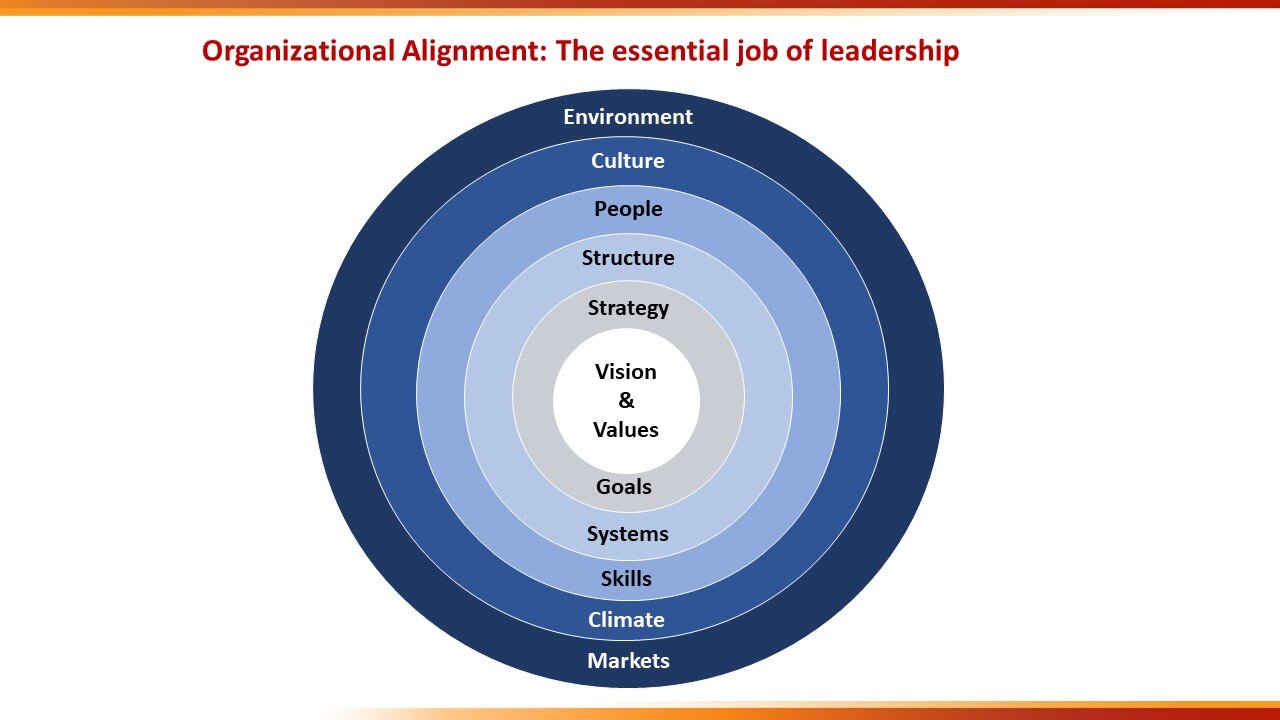Organizational Alignment
A guide for CEO action
Leaders intuitively understand the importance and power of creating an aligned organization – with people an all parts of the enterprise focused on the right goals and working in the right way*. But how do you diagnose and orchestrate alignment?
This model is best I have seen**. Simply stated: Organizations perform best when vision/values, strategy/goals, structures/systems, people/skills, culture/climate are aligned with where you see your market and broader environment heading.
With this framework in mind, leaders can periodically and systematically ask the essential questions:
How are markets, competition and broader environment changing?
How well aligned are the key elements of organization? (e.g., vision/values, structure/systems, etc.)
What are the highest priority areas to focus on to achieve greater alignment? And what changes do I need to orchestrate?
The power of this model comes from deep and systematic thinking. For each element, write down the current state and changes needed for greater alignment.
And the power is magnified when the analysis is done with your entire senior team. Think about it: If you asked your team to individually draw what a house looked like they would all come back with something showing 4 walls, a roof, windows and doors. Ask them to draw/describe an aligned organization and you will get a hodgepodge of images – from a simple and symmetrical organogram to geese all flying in the same direction. By explicitly using this framework you help align the team’s understanding and thinking. Thereby enabling them to work more effectively together in creating an aligned organization.
Key Footnotes:
‘* Extensive research exists to show the correlation between organizational alignment and performance. For example, see McKinsey’s “Organizational Health - Alignment, Execution, & Renewal” study which found that highest scorers have 2.2Xprobability of above-median EBITDA margins - 68% vs. 31%.
‘ * Many, many alignment models exist, including McKinsey’s “7-S” Framework (Shared Values/Superordinate Goals, Strategy, Structure, Systems, Skills, Staff, Style). This model is not as intuitive and does not emphasize the importance of aligning and responding to the external environment. The forced alliteration limits its effectiveness as well.
